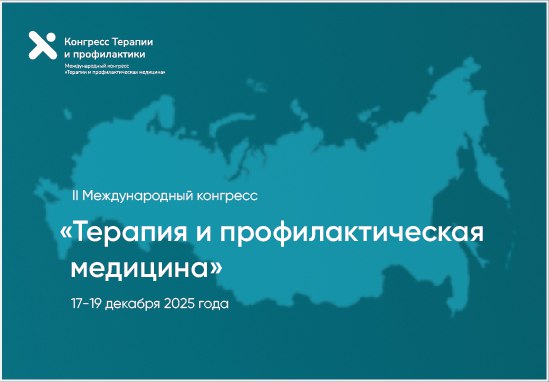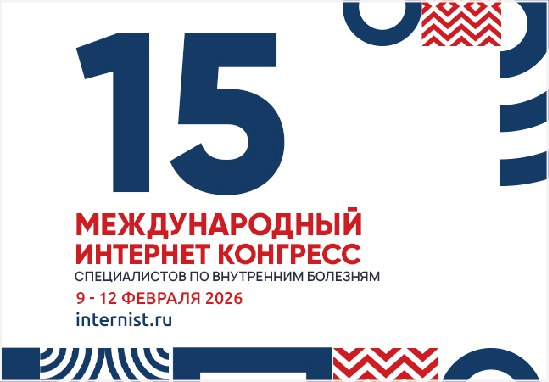Скрытая неэффективность лечения артериальной гипертонии: частота и предикторы
https://doi.org/10.15829/1728-8800-2011-6-11-17
Аннотация
Цель. Определить частоту скрытой неэффективности лечения артериальной гипертонии (СНЛ АГ) и ее предикторы в разных группах (гр.) больных при различных подходах к контролю артериального давления (АД) для оценки эффективности антигипертензивной терапии (АГТ).
Материал и методы. Изучена эффективность АГТ в 2 гр. больных (n=219 и n=39) с АГ 1-2 степеней, I-II стадий путем оценки соотношения показателей клинического (кл) и амбулаторного (а) АД. СНЛ АГ определяли как повышенный уровень аАД на фоне АГТ при достигнутых целевых показателях клАД. В качестве предикторов СНЛ АГ рассматривались пол, возраст, индекс массы тела (ИМТ), анамнестические сведения, частота визитов в клинику для контроля АД, показатели качества жизни (КЖ) по опроснику GWBQ, суточного профиля АД, АД, измеренного в ортостазе, ЭКГ-признаки гипертрофии левого желудочка (ГЛЖ).
Результаты. Частота СНЛ АГ в I гр. составила 11,0-15,7 %, во II — 22,6-58,1 % в зависимости от определения. Гр. достоверно различались по возрасту, ИМТ, шкале III и VI опросника КЖ. СНЛ АГ ассоциировалась в I гр. в модели регрессионного анализа со II, V и VI шкалами опросника КЖ; исходными данными СМАД: 24ч вариабельностью систолического АД (САД), значением минимума среднего АД днем; приемом метопролола и амлодипина. Во II гр. в корреляционном анализе предикторами СНЛ АГ оказались возраст, ИМТ, предшествующая АГТ, употребление алкоголя, уровень САД в ортостазе, индекс Соколова-Лайона, Корнельский вольтажный индекс и Корнельское произведение, индекс Gubner, шкалы I, IV и VI опросника КЖ.
Заключение. Частота СНЛ АГ зависит от ряда исходных характеристик больных, используемой АГТ. Частота СНЛ АГ может существенно возрастать при частом контроле параметров клАД вследствие регрессии к среднему.
Об авторах
М. И. СмирноваРоссия
с.н.с. лаборатории применения амбулаторных диагностических методов в профилактике хронических неинфекционных заболеваний
Москва, тел. 8 (495) 627 03 42
Р. Г. Оганов
Россия
Москва
В. М. Горбунов
Россия
руководитель лаборатории
Москва
А. Д. Деев
Россия
руководитель лаборатории биостатистики
Москва
Г. Ф. Андреева
Россия
с.н.с. лаборатории применения амбулаторных диагностических методов в профилактике хронических неинфекционных заболеваний
Москва
Список литературы
1. Национальные клинические рекомендации. ВНОК. Москва 2009; 528 с.
2. Pickering TG, Eguchi K, Kario K. Masked hypertension: a review. Hypertens Res 2007; 30: 479-88.
3. Bobrie G, Clerson P, Menard J, et al. Masked hypertension: a systematic review. J Hypertens 2008; 26: 1715-25.
4. Fagard RH, Cornelissen A. Incidence of cardiovascular events in white-coat, masked and sustained hypertension versus true normotension: a meta-analysis. J Hypertens 2007; 25: 2193-8.
5. Горбунов В.М. Использование СМАД для оценки эффективности антигипертензивной терапии. Нижний Новгород: ДЕКОМ 2006; 48 с.
6. Bobrie G, Clerson P, Cuchet A, et al. Prevalence and mechanism of masked hypertension: the ol′mesures survey. Arch Mal Coer Vaiss 2006; 99: 760-3.
7. Pierdomenico SD, Cuccurillo F, Mezzetti A. Masked hypertension in treated hypertensive patients. Am J Hypertens 2006; 19: 873-4.
8. Verberk WJ, Kessels AGH, de Leeuw PW. Prevalence, causes, and consequences of masked hypertension: a meta-analysis. Am J Hypertens 2008; 21: 969-75.
9. Andalib A, Akhtari S, Pharmd RR. Determinants of Masked Hypertension in Hypertensive Patients Treated in a Primary Care Setting Intern Med J 2010 Dec 1. doi: 10.1111/j.1445-5994.2010.02407.x.
10. Pierdomenico SD, Lapenna D, Bucci A, et al. Cardiovascular outcome in treated hypertensive patients with responder, masked, false resistant, and true resistant hypertension. Am J Hypertens 2005; 18: 1422-8.
11. 2007 Guidelines for the management of arterial hypertension. J Hypertens 2007;25:1105-87.
12. Kario K. Early morning risk management in hypertension. Current Medicine Group Ltd 2005; 68 pp.
13. Siegrist J, Junge A. Conceptual and methodological problems in research on the quality of life in clinical medicine. Soc Sci Med 1989; 29(3): 463-8.
14. Metelitsa VI, Douda SG, Ostrovskaya TP, et al. Long-term monotherapy with antihypertensives and quality of life in patients with mild to moderate arterial hypertension: a multicentre study. J Drug Dev Clin Pract 1996; 8(2): 61-76.
15. Pewsner D., Egger M., Battaglia M, et al. Accuracy of electrocardiography in diagnosis of left ventricular hypertrophy in arterial hypertension: systematic review. BMJ 2007; 335(7622): 711.
16. Zuther P, Witte K, Lemmer B. АВРМ-FIT and CV-SORT: an easy-to-use software package for detailed analysis of data from ambulatory blood pressure monitoring. Blood Press Monit 1996; 1: 347-54.
17. SAS User`s Guide: Statistics Version 5 Edition. Cary NC: SAS Institute Inc. 1985. 956 pp.
18. Verberk WJ, Thien T, Kroon AA, et al. Prevalence and persistence of masked hypertension in treated hypertensive patients. Am J Hypertens 2007; 20 (12): 1266-7.
19. Sega R, Trocino G, Lanzarotti A, et al. Alterations of cardiac structure in patients with isolated office, ambulatory, or home hypertension: data from the general population (Pressione Arteriose Monitorate e Loro Associazioni [PAMELA] Study). Circulation 2001; 104: 1385-92.
20. Verdecchia P, Angeli F, Mazzotta G, et al. Home blood pressure measurements will not replace 24-hour ambulatory blood pressure monitoring. Hypertension 2009; 54: 188-95.
21. Bj′rklund К, Lind L, Andren B, et al. Isolated ambulatory hypertension predicts cardiovascular morbility in elderly men. Circulation 2003; 107: 1297-302.
22. Ohkubo T, Kikuya M, Metoki H, et al. Prognosis of ”Masked” Hypertension and ”White-Coat” Hypertension Detected by 24-h Ambulatory Blood Pressure Monitoring. 10-Year Followup from the Ohasama Stady. JACC 2005; 46: 508-15.
23. Hansen TW, Jeppesen J, Rasmussen S, et al. Ambulatory blood pressure monitoring and risk of cardiovascular disease: a population based study. Am J Hipertens 2006; 19: 243-50.
24. Mancia G, Facchetti R, Bombelli, et al. Long-term risk of mortality associated with selective and combined elevation in office, home, and ambulatory blood pressure. Hypertension 2006; 47: 846-53.
25. Bobrie G, Chatellier G, Genes N, et al. Cardiovascular prognosis of «masked hypertension» detected by blood pressure self-measurement in elderly treated hypertensive patients. JAMA 2004; 291: 1342-9.
26. Fagard RF, Van Den Broeke C, De Cort P. Prognostic significance of blood pressure measured in the office, at home and during ambulatory monitoring in older patients in general practice. J Hum Hypertens 2005; 19: 801-7.
27. Ben-Dov IZ, Ben-Arie L, Mekler J, Bursztyn M. In clinical practice, masked hypertension is as common as isolated clinic hypertension: predominance of younger men. Am J Hypertens 2005; 18: 589-93.
28. Ishikava J, Kario K, Eguchi K, et al. Regular alcohol drinking is a determinant of masked morning hypertension detected by home blood pressure monitoring in medicated hypertensive patients with well-controlled clinic blood pressure: the Jichi Morning Hypertension Research (J-MORE) study. Hypertens Res 2006; 29: 679-86.
29. Kotovskaya Y, Bagmanova N, Kobalava Zh. High prevalence of masked uncontrolled hypertension in treated inpatients. J Hypertens 2006; Vol 25 (suppl 2): S300.
30. Pierdomenico SD, Lappena D, Tommaso R, et al. Cardiovascular risk in patients receiving double therapy with false and true nonresponder hypertension. Blood Press Monit 2006; 11: 303-7.
31. Schilacci G, Verdecchia P, Sacchi N, et al. Clinical relevance of office underestimation of usual blood pressure in treated hypertension. Am J Hypertension 2000; 13 (5 Pt 1): 523-8.
Рецензия
Для цитирования:
Смирнова М.И., Оганов Р.Г., Горбунов В.М., Деев А.Д., Андреева Г.Ф. Скрытая неэффективность лечения артериальной гипертонии: частота и предикторы. Кардиоваскулярная терапия и профилактика. 2011;10(6):11-17. https://doi.org/10.15829/1728-8800-2011-6-11-17
For citation:
Smirnova M.I., Oganov R.G., Gorbunov M.V., Deev A.D., Andreeva G.F. Masked inefficacy of arterial hypertension treatment: prevalence and predictors. Cardiovascular Therapy and Prevention. 2011;10(6):11-17. (In Russ.) https://doi.org/10.15829/1728-8800-2011-6-11-17
























































